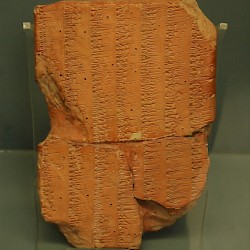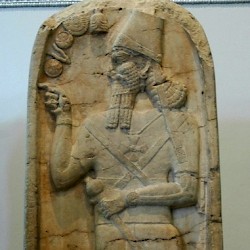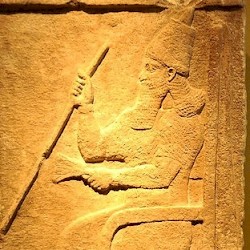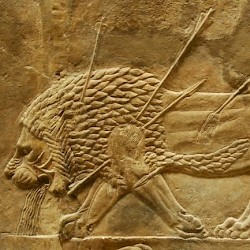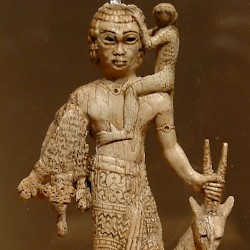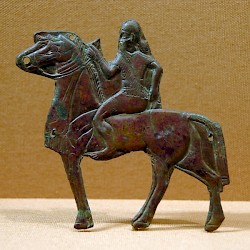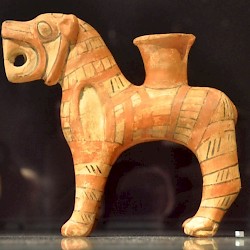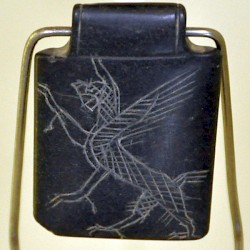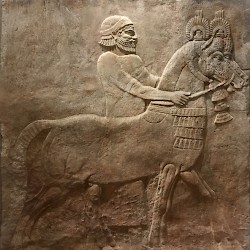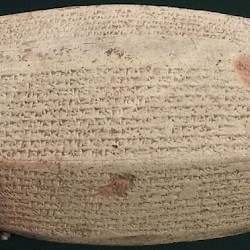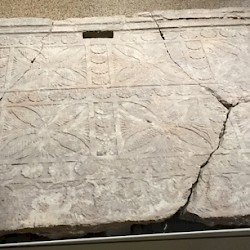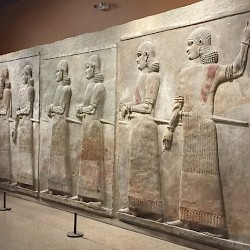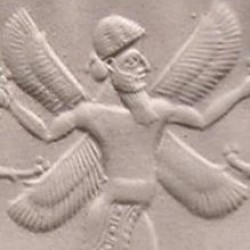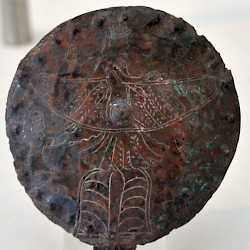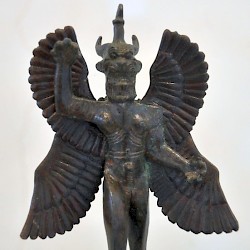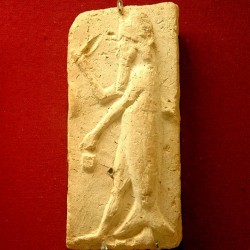Assyria
Q745718Assyria (mât Aššur): ancient name for the northeastern part of modern Iraq, situated on the east bank of the Tigris. It is also the name of one of the greatest empires of Antiquity. Assyria was overthrown in 612 BCE by the Babylonians.
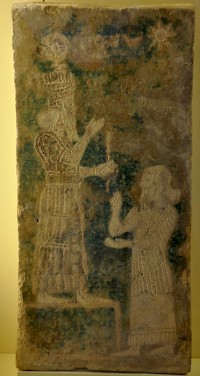
The word Assyria is derived from mât Aššur, which means "the country of Aššur", Aššur being the deified capital of a kingdom between the rivers Tigris and Little Zab. The western part of Assyria consists of an alluvial plain, where irrigation enables agriculture; in the eastern part, the foothills of the Zagros, there is sufficient rainfall.
Old Assyrian Period
The city of Aššur is known to have existed in the second half of the third millennium. Not unlike Susa in Elam, it was an independent city state that had close ties with the powerful Sumerian states in the south, and later incorporated in the empires of king Sargon of Agade and the rulers of the Third Dynasty of Ur. The invasions of the Amorites at the turn of the third/second millennium BCE created the conditions for the creation of an independent and powerful Assyrian kingdom.
In less than a century, Aššur becamee an important trade center. The activities of its merchants in Anatolia are known from thousands of tablets from Kaneš, which often mention the trade in copper, but also document many aspects of everyday life.
Šamši-Adad I (r.1813-1781?) was king of a small empire that included the western Zagros, a part of the area between Euphrates and Tigris. He was powerful enough to call himself "king of the universe", but his son Išme-Dagan lost his independence and became a vassal of king Hammurabi of the Old-Babylonian empire. Meanwhile, the trade activity continued.
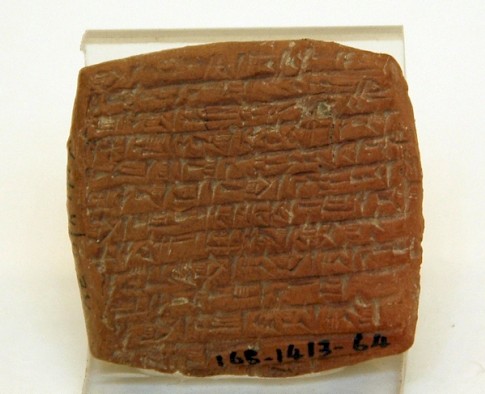
For the mid-second millennium, we know less about the history of Assyria, although we know that it became a vassal of the powerful empire of Mitanni, and know (from the Assyrian King List) that there were thirty-five rulers until Aššur-Uballit I (r.c.1364-c.1328). During his reign, Assyria becomes "visible" again. He and the Hittite king Šuppililiuma attacked Mitanni, and Assyria regained its independence. This is the beginning of the Middle Assyrian period.
Middle Assyrian Period
The successors of Aššur-Uballit, especially Adad-Nirari I (r.c.1305-c.1274), Shalmaneser I (r.c.1273-c.1244) and Tikulti-Ninurta (r.c.1243-c.1207), continued the Assyrian expansion. In the west, the empire shared a border with the empire of the Hittites, and in the south, Babylon was attacked. Warfare was merciless: the first evidence for mass deportations dates back to this period. It was to become a useful instrument for rulers of empires, also applied by the kings of Babylonia and Persia, and Alexander the Great.
The twelfth century started comparatively quietly for the Assyrians. The ancient Near East had become unstable by the invasions of the Sea People, and there were other nations that had left their homelands in search for more fertile land, like the Aramaeans. The Hittites were overthrown. It seems that the Assyrians succeeded in consolidating their conquests, although in the west, forts were evacuated.
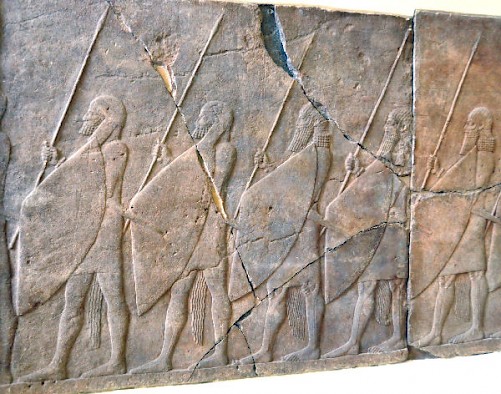
At the end of the century, the Assyrian ruler Tiglath-Pileser I (r.c.1114-c.1076) resumed the aggressive policy. For the honor of the god Aššur, his charioteers waged war in the west, where, since the fall of the Hittite empire, no serious enemy could obstruct the Assyrians, who could wash their weapons in the Mediterranean Sea. In the north, the tribes near Lake Van, and in the south, the Babylonians suffered from Assyrian aggression. But after the death of Tiglath-Pileser, his kingdom got its share of the problems that were encountered by the entire Near East. The Aramaeans settled in Assyrian towns in the west, and later become independent. For a century and a half, Assyria was in decline.
The Neo-Assyrian Empire
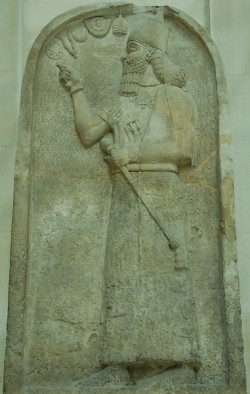
By the end of tenth century, Assyria's fortunes were restored, and under king Aššurnasirpal II (r.883-859), the soldiers of Aššur, now often fighting on horseback, marched to the Zagros mountains, reached Lake Urmia, and waged war against the kingdom of Urartu in the north. Other campaigns were directed against the Aramaeans in Syria and the towns on the plains of eastern Cilicia. A new capital, Kalhu, was built.
The empire had now reached the same size as it had had during the reign of Tiglath-Pileser I. The expansion continued under Aššurnasirpal's son Šalmaneser III (r.858-824), who consolidated the Assyrian power in the west, broke the power of Damascus, and whose designs even encompassed Israel. (Its king Ahab was part of an anti-Assyrian coalition that for some time managed to repel the invaders, but in the end, Šalmaneser was victorious and received tribute from king Jehu.) A new Assyrian capital was founded at Nineveh. Yet, after Šalmaneser's reign, we hear less about military successes. From the east, nomadic Medes made started to raid the Assyrian Empire, while in the west, Damascus retained some of its independence. Nevertheless, it survived, was consolidated, and still exercised great political influence (example). Adad-Nirari III finally captured Damascus (source).
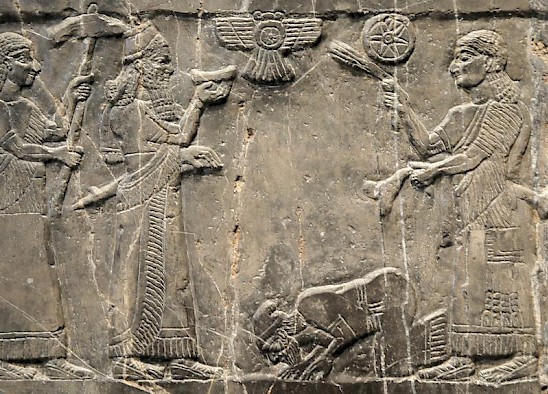
Slowly but securely, all tribute paying vassal kings were replaced by provincial governors. Regions as far away as Cilicia were directly ruled by Assyrian officials and visited by royal inspectors. There were garrisons on several places, and a Royal Road connected the Assyrian capital with Susa in Elam and Gordium in Anatolia. King Tiglath-pileser III (r.744-727) finished the conversion of the empire. This system of provinces, governors and inspectors, roads and garrisons was to survive the Assyrian empire. Later, the Babylonians, Persians, and Seleucids used the same instruments to rule the ancient Near East.
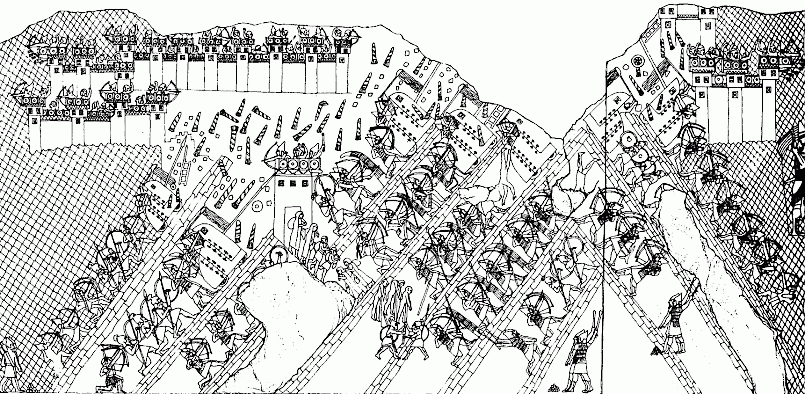
Now, the expansion started again. Tiglath-pileser III conquered Damascus and Gaza. One of the great challenges was the organization of Babylonia in the south, which was Assyria's twin-culture and was too highly esteemed to be reduced to the status of province. Tiglath-pileser III sought a solution in a "double monarchy": he united the two countries in a personal union. His son Šalmaneser V (r.726-722) continued this policy. In the west, he tried to add Israel to the Assyrian empire, but was murdered during the siege of Samaria.
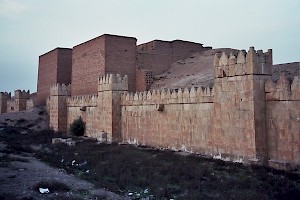
His successor was Sargon II (r.721-705), who did not belong to the royal dynasty. He was a capable general, however, and conquered Israel, defeated the Egyptians near Gaza, captured Karchemish in the west, fought against the Medes, supported king king Mit-ta-a of Muški (= Midas of Phrygia?) against the invasion of the Cimmerians, and overcame king Rusa of Urartu. He also replaced Kalhu as capital with a new city, Dur-Šarukkin.
Sargon's son Sennacherib (r.704-681) captured Lachish, the most important city of Judah, and received tribute from Jerusalem. Babylon, which had revolted under Marduk-apla-iddin, was sacked in 703, and its entire population was deported - a harsh measure, even for oriental standards. The Babylonians were forced to work in another new capital, Nineveh, which was surrounded by a double wall of perhaps 25 meters high, and received its water from a canal with a length of 50 kilometers.
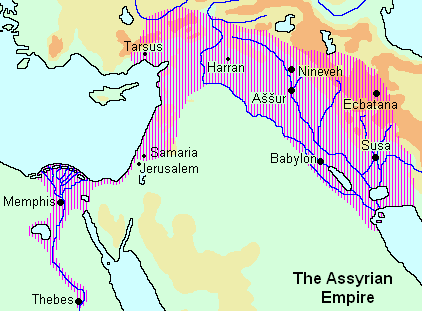
During the reign of Sennacherib's son and successor Esarhaddon (r.680-669), the Assyrian armies defeated the Cimmerians, who had threatened Anatolia, and advanced to Egypt, where the capital Memphis was evacuated by the last pharaoh of the Kushite dynasty, Taharqo. It is during this period that our sources start to mention internal strife. This may be an optical illusion - we have more sources - but it is more likely that the spoils of the successful conquests were unequally divided. At the same time, it seems that the empire suffered from overstretch, because Egypt was too heavy a burden. Although Esarhaddon's successor Aššurbanipal (r.668-631) sacked Thebes, he eventually gave up the country along the Nile. One of the Assyrian vassals, Psammetichus, hired Greek and Carian mercenaries, reunited Egypt, and founded a new dynasty.
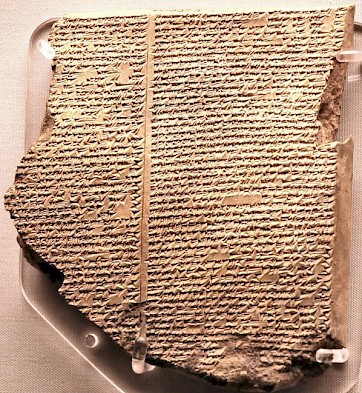
The end of the Assyrian occupation of Egypt was probably partly due to the fact that the viceroy of Babylonia, Aššurbanipal's older brother Šamaš-šuma-ukin, had revolted (ABC 15). When the Assyrians had overcome this insurrection, they attacked the Babylonian ally Elam and destroyed its capital Susa. The Arabs also suffered. Again, many people were deported to Nineveh.
Of the more peaceful activities of king Aššurbanipal, the creation of a great library must be mentioned. The 22,000 cuneiform tablets are among the most important sources for our understanding of ancient Assyrian culture. Among the most famous texts is the Epic of Gilgameš, which also contains an account of the Great Flood.
Decline and fall
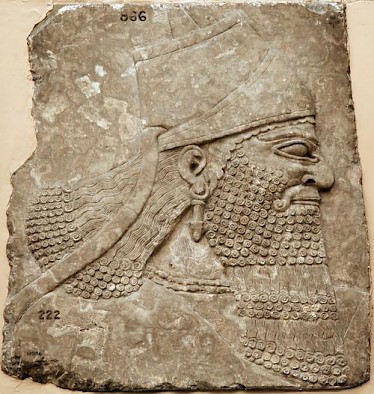
Although the Assyrians had evacuated Egypt, their armed forces were still superior. One of the few serious problems was the status of Babylon. Several solutions had been attempted: a personal union, destruction, and appointment of a viceroy. None of these solutions had been really successful, but the Assyrians had always been able to impose their ideas. Another enemy was the coalition of Medes in the east, but they were usually defeated. Why things went wrong, is a still unsolved puzzle, not in the least because we have few sources for the final regnal years of Aššurbanipal.
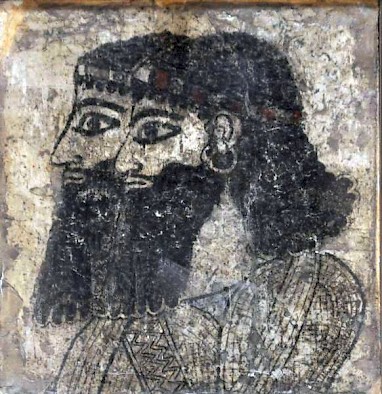
After his death in 631, the situation was confused, and the Babylonians revolted against their two Assyrian governors, Sin-šumlišir and Sin-šar-iškun. The people of Babylon defeated an Assyrian army, and according to the Babylonian chronicle known as ABC 2, the Babylonian general Nabopolassar was recognized as king on 23 November 626. This seems to have been the beginning of a series of insurrections against the Assyrians, in which the Medes also played a role. The only ally of the Assyrian king was pharaoh Psammetichus, who understood that if the Babylonians would overthrow Assyria, the new superpower would attack Egypt.
In the Fall of Nineveh Chronicle, we can read about the events in these years. We find Nabopolassar defeating the Assyrians near Harran in 616, which betrays a daring strategy: the Babylonians tried to block the main road between Assyria and the west. This time, however, the Egyptians arrived in time to prevent disaster. Next year, Nabopolassar started to besiege Aššur, still the religious capital of Assyria. Again, the Assyrians averted a catastrophe, but now, the Medes appeared on the scene. In 614, they took the city. This was the beginning of the end.

The Median leader Cyaxares now concluded an alliance with the Babylonians, which was cemented, according to the Babylonian historian Berossus (third century BCE), by a royal wedding: the Babylonian crown prince Nebuchadnezzar married a Median princess named Amytis, who may or may not have been a daughter of the Median crown prince Astyages.
After a year of inconclusive campaigning, the united Medes and Babylonians laid siege to Nineveh in May 612, and in July, the city fell. (Archaeologists have discovered the remains of forty of the defenders.) King Sin-šar-iškun, who had once been in charge of Babylon, seems to have committed suicide.
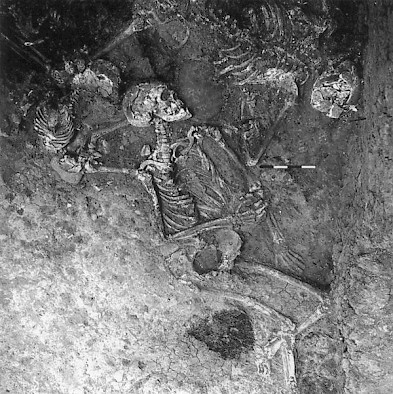
He was succeeded by a man with the ironical name Aššur-Uballit, after the founder of the Middle-Assyrian empire. He briefly reorganized his forces in Harran, but was expelled, and when pharaoh Necho II appeared on the scene, he was defeated. The Babylonians and Egyptians would continue their struggle in Syria and Palestine.
This was the end of the Assyrian empire, but the word "Assyria" remained in use and referred to the non-Babylonian parts of the Babylonian empire. In the Achaemenid royal inscriptions, Athurâ can both indicate "real" Assyria, and the former Assyrian possessions on the far side of the Euphrates, which we call Syria.
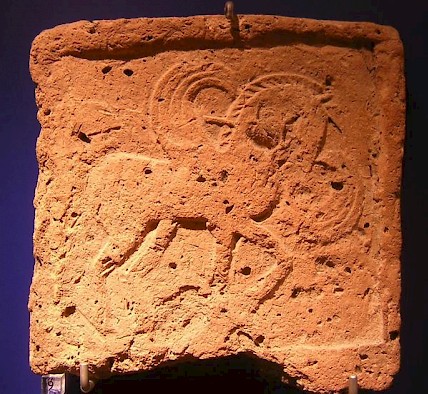
After the conquest of the Achaemenid Empire by Alexander the Great, Asyria proper, with its capital Arbela, was variously known as Hdayab (Syriac), Adiabene (Greek and Latin), Nôd-Šîragân (Parthian) and Ardaxširagân (Sasanian Persian). Yet, the original word was never forgotten. When the Roman emperor Trajan conquered Armenia and Mesopotamia, the province on the other side of the Tigris was called Assyria, and even today, the Christian church of Adiabene, which is very ancient, still calls itself Assyrian.
Literature
Amélie Kuhrt, The Ancient Near East c.3000-330 BC (1995)
